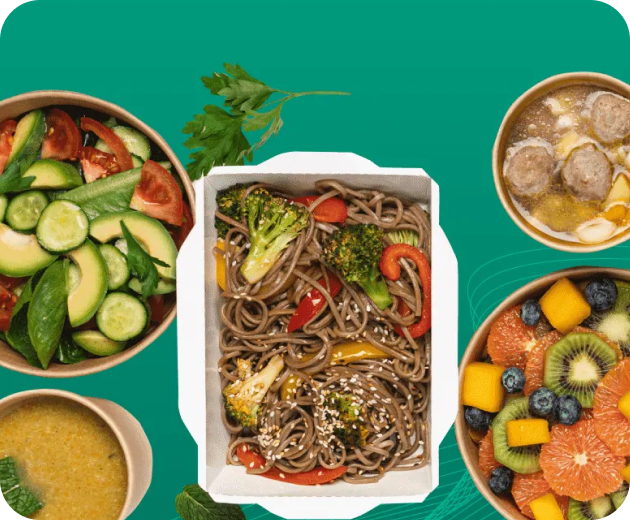Mastering Beverage Analytics for Competitive Advantage
Beverage analytics is one of the hottest trends in the food and beverage industry today. With the increasing availability of data and advanced analytics tools, companies are now able to gain a deeper understanding of their customers’ preferences, behavior, and buying patterns.
In this guide, we will explore how mastering beverage analytics can give your company a competitive edge as well as the key steps to effectively implement a beverage analytics strategy.
What is Beverage Analytics?
Beverage analytics involves the use of data analysis tools and techniques to gather, process, and interpret data related to beverage production, distribution, and consumption.
It encompasses a wide range of activities, including sales tracking, consumer preference analysis, and market trend forecasting.
This data-driven approach helps beverage companies make informed decisions and stay ahead of market trends.
The beverages market is projected to reach a staggering $112.80 billion by the end of 2024, with an anticipated compound annual growth rate (CAGR) of 10.66% from 2024 to 2029, as reported by Statista.
This significant growth underscores the vital role of beverage analytics in maintaining competitiveness and fostering innovation within the industry.
By leveraging beverage insights, companies can better understand their customers and tailor their products to meet ever-changing consumer demands.
Why is Beverage Analytics Important?
The beverage industry is highly competitive and rapidly evolving. Understanding market dynamics and consumer preferences is essential for success. Beverage analytics provides companies with the ability to:
- Accurate forecasting: By analyzing historical data, companies can predict future trends and plan their production and beverage marketing strategies accordingly.
- Spotting fresh opportunities: Data analysis helps identify new market opportunities, whether it’s launching new products or entering new markets.
- Boosting operations: Analyzing operational data can uncover inefficiencies and areas for improvement, leading to cost savings and enhanced productivity.
- Enhanced risk management: Understanding market data helps in identifying potential risks and mitigating them proactively.
- Faster decision-making: Real-time data analysis allows for quicker, more informed decisions.
Key Concepts in Beverage Analytics
| Stage | Description | Key Actions |
| Data Collection & Integration | Gather data from various sources like sales records, customer feedback, and market surveys. | – Gather data from multiple sources. – Integrate data into a unified system for a complete view. |
| Data Analysis & Visualization | Process and visualize data to identify patterns and trends. | – Use analytical tools to analyze data. – Use visualization tools (heat maps, graphs) to make data accessible. |
| Predictive Analytics | Forecast future trends using historical data. | – Leverage machine learning algorithms to predict consumer behavior and market shifts. |
| Personalization & Audience Segmentation | Tailor marketing efforts to different customer groups. | – Segment audience based on various factors. – Craft personalized marketing messages for each segment. |
Applications of Beverage Analytics
Beverage analytics has diverse applications across the industry:
- Product development: Analyzing consumer preferences and market trends aids in the creation of new products that meet market demand.
- Marketing optimization: By understanding which products are popular and why, companies can refine their marketing strategies to target the right audience effectively.
- Supply chain management: Data analytics helps in optimizing supply chain operations by predicting demand and managing inventory efficiently.
- Quality control: Monitoring production data ensures that quality standards are consistently met, reducing waste and improving product consistency.
Challenges
While beverage analytics offers a wealth of insights to optimize your business, it’s not without its hurdles.
Data Quality and Integration
Merging data from different sources like sales, customer reviews, and market research can be tricky. Inaccurate or inconsistent info can lead to bad decisions, so making sure everything’s clean and reliable is key.
Technical Expertise
Analyzing all this data takes some serious brainpower. You might need some tech-savvy folks on your team who can decipher the data and unlock the hidden insights.
Cost Considerations
Implementing advanced analytics tools and systems often requires upfront investment. This can pose a barrier for smaller or medium-sized businesses with limited resources.
Data Privacy
Keeping customer data safe is a top priority. Businesses need to handle it responsibly and follow all the data protection rules to avoid any trouble or losing their customers’ trust.
Future of Beverage Analytics
The future of beverage analytics looks promising, with advancements in technology driving further innovation:
- Artificial Intelligence (AI) and Machine Learning (ML): These technologies will play a significant role in enhancing predictive analytics and automating decision-making processes.
- IoT and Smart Devices: Integration of IoT devices in production and distribution will provide real-time data, improving efficiency and transparency.
- Blockchain: This technology can enhance supply chain transparency and traceability, ensuring product authenticity and quality.
FAQs
Small businesses can use beverage analytics to understand local market trends, identify niche opportunities, and optimize their product offerings. This can help them compete with larger brands by catering specifically to their target audience’s preferences.
Tools like Tastewise provide comprehensive data and insights. These platforms use AI and machine learning to analyze large datasets, making it easier for businesses to make informed decisions.
Ensuring data privacy involves complying with regulations such as GDPR and CCPA, anonymizing consumer data, and implementing robust cybersecurity measures to protect data from breaches.
Yes, by analyzing historical data and current consumer behavior, beverage analytics can help predict future trends. This allows companies to stay ahead of the curve and innovate accordingly.
Beverage analytics provides the tools and insights necessary to navigate this dynamic landscape.
Companies like Tastewise, a GenAI-Powered Consumer Data Platform for modern food & beverage brands, are leading the way by offering innovative solutions to help businesses validate concepts, survey millions swiftly, and strategically position themselves in the market.
Embracing beverage analytics not only drives beverage innovation but also ensures long-term success and growth in the competitive beverage market.




